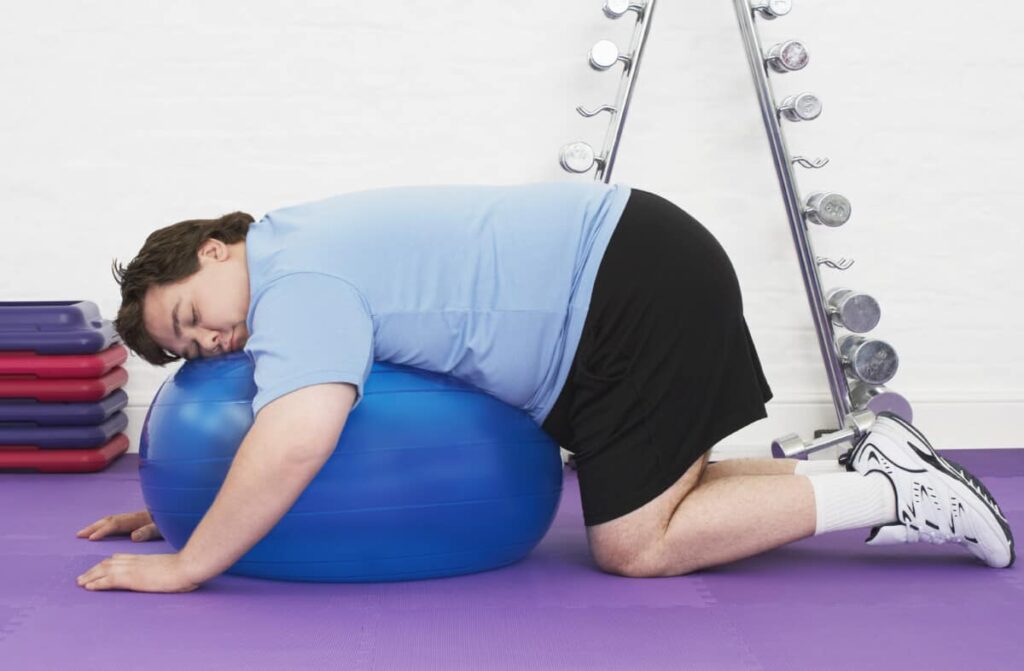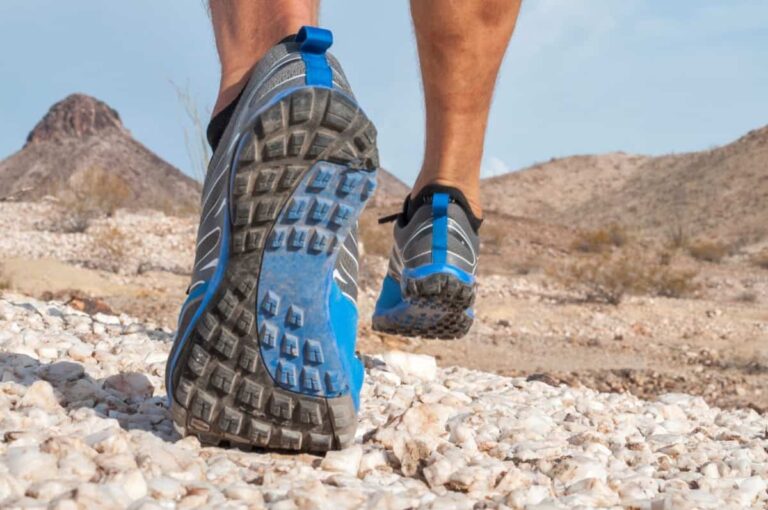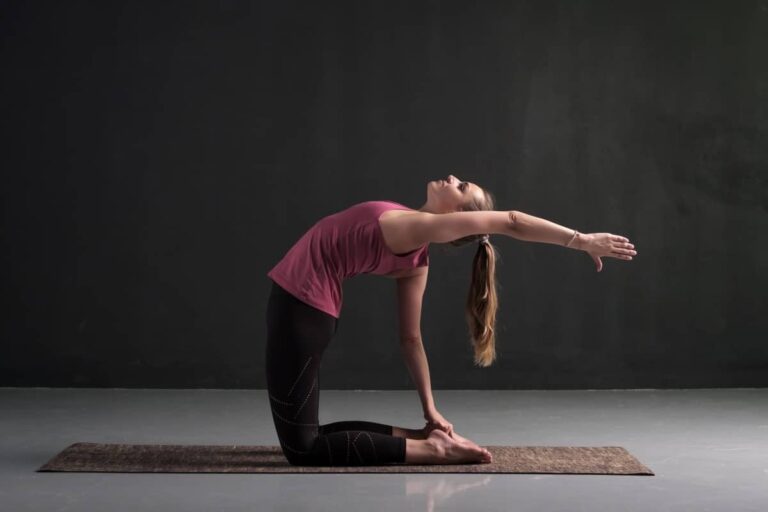Explained: Can Just Anyone Become A Distance Runner?
Almost everyone can become a distance runner. If you are willing and your body able, you can go from zero exercises to running a marathon in a year. Stick around, and by the end of this article, you’ll be Googling running shoes.
Since distance running is when you run continuously for at least 1.9 miles, people without any debilitating health issues can be qualified for distance running.
Whether 1.9 miles (source) is your distance, or like Forest Gump, you just keep running, it doesn’t matter; you’re a distance runner. Distance running is like that; one minute you’re comfortable on the couch, and the next, you’re heading out for an easy eight miles before work. Comfort and distance running are relative.

How Do I Become A Distance Runner If I’ve Never Run Before?
It’s not as tough as you think; many outstanding runners today once were confirmed non-runners. They decided to go for a run, and it changed their life.
Start From Zero; it’s Not as Tough as You Think
If you don’t exercise at all and you are a confirmed couch potato with a packet of potato chips always close by, the very idea of going for a run, any run, is pretty scary. The thought of one day completing a marathon is so foreign to you; you might as well be in a matrix sequel.
This might all be true, but don’t let that stop you. The old cliche, “How do you eat an elephant?” applies here and will one day when you run your first marathon. The answer is “one nibble at a time” or, in your case, one step at a time.
Start Slowly and Increase Your Distance in Small Increments
This is the critical part of your training, only because if you don’t do it right, you will not enjoy it and will not continue. Too many people decide to run on the spur of the moment. They buy the best shoes and gear and set out for their first run, looking oh so cool. Off they sprint into the distance only to collapse in a heap around the corner. They suddenly realize that gear does not make you a runner.
Start slowly, go for a half-mile walk, then repeat the next day. Then a bit further the next time. Now, start running slow segments in between the walking. Each time you go a bit further. Each time you feel a bit stronger. Yes, you want to raise your heart rate but not too much that you are breathing heavily. Keep this up, and in a few weeks, you’ll be pleasantly surprised at the results. You’re on your way.
Get Advice From the Long-Distance Running Experts
Distance running is a simple sport. Don’t overcomplicate it. But also don’t be scared to ask for advice. Just make sure you ask real experts and don’t take advice from some well-intentioned but clueless runner on the internet. If you are a social runner enjoying shorter runs, then you are probably just fine. But if you have loftier goals in mind and would like to increase your training to reach them, ask the experts. Get a training program and try to stick to it as closely as possible, as long as it’s working for you.
Find a Running Mate to Keep You Motivated
Your running is going quite well, you run regularly and are enjoying it, but it can get boring running on your own. That depends entirely on you. They don’t talk about the loneliness of the long-distance runner for nothing.
Besides the company, a running buddy will also motivate you to get out there and run. When your alarm beeps at 5 am on a cold, dark, and wet winter’s morning, you can quickly go back to sleep. But if Rocky the Roadrunner is waiting for you on the corner of freezing and soaked, you’d better be there.
Running with a friend makes the run more fun without paying too much attention to the actual running.
Join An Accountability Group
You could join a club and become a club runner; loads of opportunities to meet new people and become a better runner at the same time.
When you find regular running mates, it makes sense that you’re both of similar fitness and pace. If you’re a mid-packer, you’re probably not going to run with a competitive runner; it wouldn’t work for either of you. It’s also good to have several running buddies, some of whom are a bit faster than you and will push you out of your comfort zone when you run together.

The app Meet-Up is a popular option to find people with like interests who want to do things, together.
Another option is to join a beginner running group on Facebook like this one. I see people (I’m in this group, too) in this group who post their results, and I love it! For some their starting point is running around their block, and that’s a fantastic start. Sharing it with others can be a motivation and help you get out the door.
Measure your Distance and Times
Some people meticulously log every mile they run. They keep an extensive logbook and update it immediately after every run. They probably also upload their runs to Strava and can tell you to the nearest foot how many miles they have run this week/month/year. That’s nice to have! But don’t feel like you have to do that. If it’s not motivating or interesting to you to keep track of everything, don’t.
It’s certainly helpful to know your times over various distances so you can compare your improvement over time. When you run five miles in 90 minutes, but a few months later, the same distance takes you 70 minutes, it’s rewarding on a personal level and interesting from a fitness aspect. So yes, keep an eye on your PB’s (personal best) and PW’s (personal worse); it will add a quantifiable element to your running.
Avoid Injuries By Getting Enough Rest
The secret to preventing severe injury is not to overdo it. Don’t run too much or too fast. Or too fast. Both of these sound simple, especially for the inexperienced. But when you start getting fit, you start craving running more than you would believe. It’s both the endorphins and the feel-good factor of being able to run for long periods without much discomfort.
Too many runners overdo their training; they don’t give their bodies enough time to rest. It’s all very well pushing your body to its limits, although this is not recommended unless you are a professional athlete when it’s expected. But for you, train hard, fight easy, and make sure your body has enough time to recover.
As great as you feel while running serious distances, your body can be strained and it needs time to recover. If you are running with a slight pain in your body, this is a good place to stop and find out what’s going on before it becomes a bigger problem. It might not bother you, and you don’t want to lose your fitness, so you carry on running, often resulting in a more severe injury and an extended time off from running. Don’t risk it. Rest is your friend.
Supplement Your Training with Other Activities
Once you become a distance runner, it becomes your thing, and all you want to do is run. But the repetitive nature of road running means you tend to use the same muscles all the time. Supplementing your running training with a gym workout or cycling will help you build a stronger core, give you some variety to your training, and result in better all-round fitness.
You’re an athlete now, time to up your game. Yes, I called you an athlete. When you get to this stage, don’t let anyone tell you differently.
In fact, I wrote an article about running and cycling, here, that shows the benefits of these two activities in the same workout program.
Enjoy the Running or Don’t Run
You can listen to all the advice in the world, purchase the best kit and be the best-looking runner on your street. Hey, you might even become a pro and win a few races. But if you don’t enjoy it, it’s all a waste of time.
It might not be all fun; there will be tough times, injuries, layoffs, lockdowns, and who knows what else. But when you enjoy running and what it does to both your physical and mental health, you’ll realize why you run. It might be tough waking up before dawn to run, but you know it’s worth it, so you do it. You’re a runner.
Can Anybody Run?
Yes. Unless you have a serious medical situation that prevents you from running. That being said, many people run who have plenty of physical limitations, can run. We were born to run. Our ancestors hunted animals to live. If they didn’t catch, they didn’t eat. Many of the famous hunter-gatherer tribes from around the world used to stalk and run down their prey.
They would often take multiple days before the animal tired enough for them to catch it, covering a great distance in the process. They didn’t get a medal when they finished, but they did get to eat and feed their families. They got to live.
This study examines human running and hypothesizes our ability to run long distances is linked to our relatively hairless skin, and our ability to sweat. Who would have thought!
Genetically speaking, we all had runners in the family. This doesn’t mean going to look for your grandfather’s running medals, but to understand that your early ancestors were probably all runners. But times have changed, and now we drive half a mile to satiate our eating needs.
Are Long-Distance Runners Born or Made?
In theory, all humans are born to run. But when it comes to elite long-distance runners, it’s a combination of being born with superior running ability and training exceptionally hard to be one of the best. Elites are likely born with either a natural sporting ability or at least no limitations, but many have succeeded by combining their natural ability with proper training and a will to win. Long-distance racing can be as much a mental battle as it is a physical one.
Even if you have obstacles in your way this doesn’t mean you are incapable of running farther than you think is possible.
The Elite Long-Distance Runners
Now, while anyone can run, not everyone can run fast, and only a small elite band of long-distance runners are full-time professionals. The question is, what do these elite runners have that average runners don’t? There are enthusiastic and talented runners who give it their all, but they remain just good runners. They will never be great runners. It’s not their fault they don’t have the genetic makeup to be a pro runner.
What Is Different About Elite Distance Runners?
Research seems to suggest that elite runners do indeed enjoy a physiological advantage over most runners. These are three of the main attributes of elite distance runners.
- Elite runners, almost to the runner, enjoy a higher VO2 Max than most mere mortals. VO2 Max is used to test a person’s unique cardio capacity and represents the most efficient way your muscles, lungs, and heart function during exercise. While this can be affected by exercise, some bodies are better at this than others.
- Elite runners are super-efficient movers; they can move faster and smoother using less energy.
- Top runners can run at their anaerobic threshold for more extended periods than regular runners. Those guys that cruise the local 5-mile charity run, almost printing to the finish while chatting all the time. That’s them. Try to run at your cardio threshold and maintain a conversation with your running buddy. See how long that lasts.
(inspired by active.com)
10 Tips to Make you a Better Distance Runner
Running needs to be enjoyable as well as beneficial. Here are some tips to achieve both of those goals.
Some tips inspired by sportme.com.
1. Get the Right Gear – Choose Comfort over Appearance
Running does not have to be an expensive sport. Get some comfortable running tops and shorts, tights, whatever floats your boat, but don’t spend fortunes on high-end gear. Save your money for your sneakers; this is where you don’t want to stint.
Shoes are critical to running; you do not have to buy the most expensive running sneakers; they won’t make you a better runner. But shop around, talk to experts and get excellent advice before you purchase. Try them on before you leave the store; go for a little jog around the shop if possible. You do not want to line up for a long race with uncomfortable shoes.
2. Avoid Dehydration and Overhydration
If you are running shorter distances, hydration should not be an issue. But when you start running five miles and up, you need to pay attention to your hydration. During organized runs, there are usually regular water points to keep you hydrated. But if you are on a long training run, you should run with a lightweight backpack with sufficient water for your run.
Staying hydrated does not mean drinking as much as you can, as being overhydrated can be as dangerous as being dehydrated. Drink when you are thirsty and pay attention to your body.
Another school of thought is to drink a bit before you are thirsty. There’s some controversy there believe it or not.
In any case, if you have stopped sweating, that’s a sure sign you are dehydrated. Plan your water properly before any run; you never want to run out of liquid far from a rehydration source.
3. Eat Healthy – Fuel up to Run Long Distances
One way of maintaining solid fitness and making sure you don’t hit the dreaded wall in your next long run is to eat correctly. This doesn’t just mean the night before a big run, but always. It also doesn’t mean you can’t eat that piece of chocolate cake; after all, most runners say that they run so that they can eat whatever they want. Not quite true.
What you eat is your choice, and eating can be very personal. Not that long ago, it was all about carboloading before any long run, but that school of thought has changed dramatically, and a high carb diet is now best replaced by the Low Carb High Fat (LCHF) diet. At least that’s where we are, today.

Eat enough protein and fat, some carbs, and lots of healthy vegetables, and you’re good to go. If you are unsure about your diet, speak to a sports nutritionist.
Even with healthy eating, your body might need to refuel during a run, especially if running for longer than three hours. This might mean eating energy gels for sustenance during a run. But If your body is well-fueled from the week, night and morning before, your stamina and energy levels will last longer, and you are less likely to require additional sustenance.
Are you intrigued by energy gels and want to know who uses them? Check out our article here that goes into detail about them.
4. Add Some Spice – Vary Your Routes
You may have your favorite five or eight-mile routes that you love and stick to as often as you can. You know the route so well, that you can predict the cracks in the sidewalk. Running allows you to cover a greater distance in a shorter time than walking. Try new routes to add some fun and spice to your running routine, run on trails, if possible, or through the city streets before the city wakes up.
Seek out new views and beautiful surroundings. Take a night run in the rain, start running before the sun comes up, and feel that delicious warmth as the sun rises to kiss you good morning. There are multiple options when it comes to running. Don’t be scared to mix your routes. Run on the mountain, run up hills, run on a wine farm; running just became a whole lot more fun.
5. Stretch after training
Stretching is a personal thing. I never stretch before a run; that’s because I run pretty slowly, and for me, that’s the best way to warm up. On the other run, I do see multiple benefits to some gentle stretching after your run.
In fact, even the research hasn’t determined if stretching can reduce injury (see more here). It really is a personal preference.
6. Plan your Running Week and Run the Plan
Suppose you have a specific running goal in mind or a particular race you are training for; it’s best to have a running plan. This plan should be put together by you with the help of a running coach. Once you have a plan, stick to it, and when race time arrives, you’ll be prepped and ready to go.
This plan must include the taper time, which means reducing your training dramatically in the final weeks before a big run. Follow your schedule properly, and you arrive at the start of any run fit, rested, and your body craving that long run. Now, go for it.
7. Long-Distance running Requires a Strong Mental Approach
The amazing thing about being fit for distance running is that you often think you can go on forever. This can change when you are running a race and chasing down a PB. Now, you are pushing your limits, your body tires faster, and your head starts to play games with you. “Why are you punishing yourself? Just stop. You’ll get it next time,” etc…etc. This is when you need to make a decision.
Listen to your head or change the message. Suddenly you start thinking, I’m ok, I’ve got this, I’m hurting, but I’m moving. Embrace the pain (unless it’s bone, tendon, or joint pain… you should address that and not push yourself), ignore the devil on your shoulder, and let your mental attitude and months of training get you to that finish line.
8. Recovery Makes You Strong
Although touched on before, your recovery, both after long training sessions and races, is critical. The better you recover, the better the body heals, and the sooner you’ll be back to your training schedule.
But for now, make sure to eat properly and rest plenty after any major exertion. Eating plenty of protein and a scattering of carbohydrates will start your recovery. Make sure to eat enough and enough of the good stuff. Then go for the milkshake!
9. Reward Yourself For Your Hard Training
Regular running will make you feel so much better about yourself, both physically and mentally, but don’t be too spartan about your training and eating. Even if you’re in the best shape of your life and your body is a temple. It’s quite ok to “desecrate” that temple once in a while, be it with a cheeseburger or a massive slice of a lemon meringue pie.
Eating healthy has already been discussed and will have a significant impact on your running performance, but it’s no good to deprive yourself entirely of the treats or less healthy foods out there. Especially after a long race, who doesn’t love a few cold beers or even a tall glass of chilled coke? But, that’s now and again; eat well, but do treat yourself occasionally.
10. Run to a Beat and see your Performance Improve
It’s been scientifically proven that running to music can make you run faster. There can be a huge improvement for just running to some beats. This boost doesn’t last forever, but it definitely can help you push yourself.
We have an entire article about running to music, make sure and check it out.
When I run on the promenade, I often listen to music; it gets me in the zone and ups the temp of my running. I do like techno dance music as my go-to for running, but whatever works for you. I am doubtful that classical music makes you run faster, but I’m pretty sure I’m wrong. When running off-road on the trail, I prefer the sounds of nature and my heavy breathing, but on the tar, get your groove on.
Is There Such a Thing as a Runner’s High?
My answer is a resounding yes. It’s not some kind of hallucinatory psychoactive induced high, it’s that feeling when you are running in the zone. You feel this euphoric and blissful feeling. It’s when your head and body are synched and focussed on just your running. At times like this, you do feel like you could run forever.
Conclusion
The definitive answer to the question of whether anybody can run distance is yes. Does everybody want to run distance? No. But for those that think they might like it, the benefits are enormous, from your mental health to your overall physical well-being. It will increase your confidence and could also significantly improve your social life. Most runners are pretty friendly creatures. So, if you are willing and able, to take that first step, you never know where it might lead.





